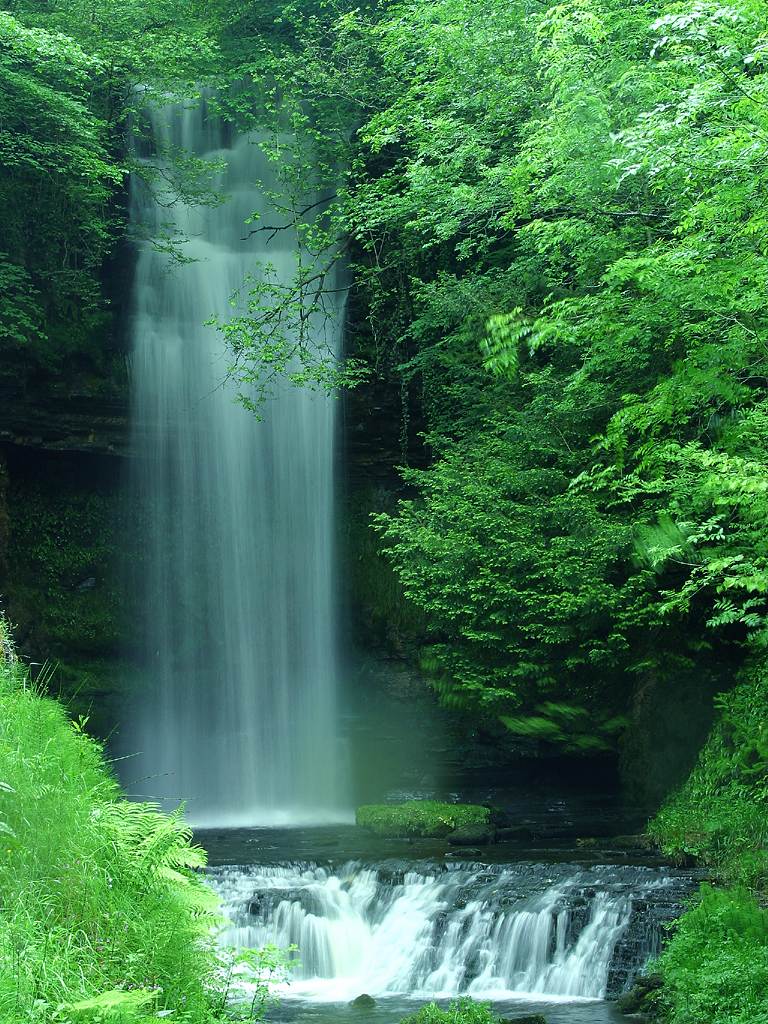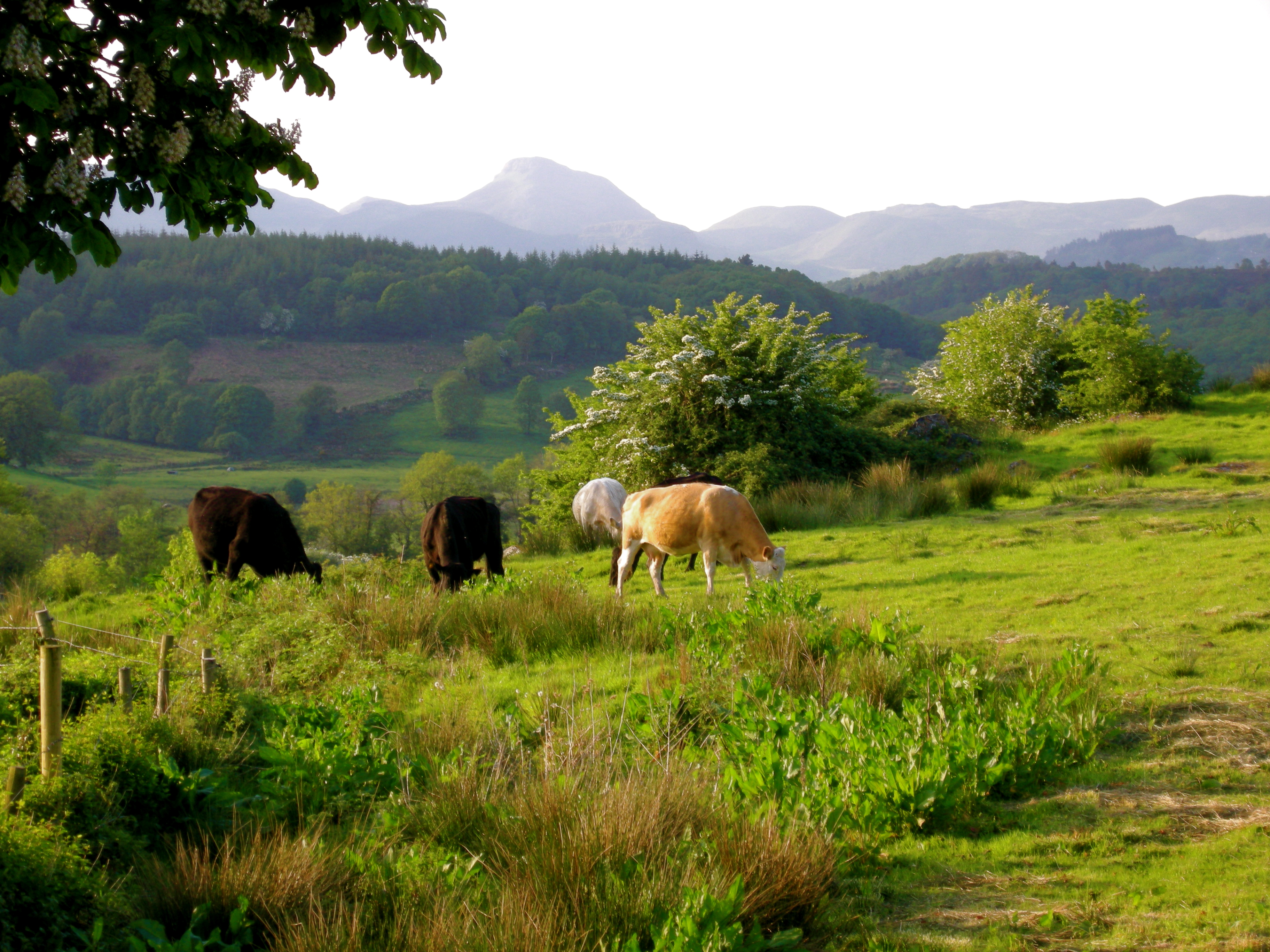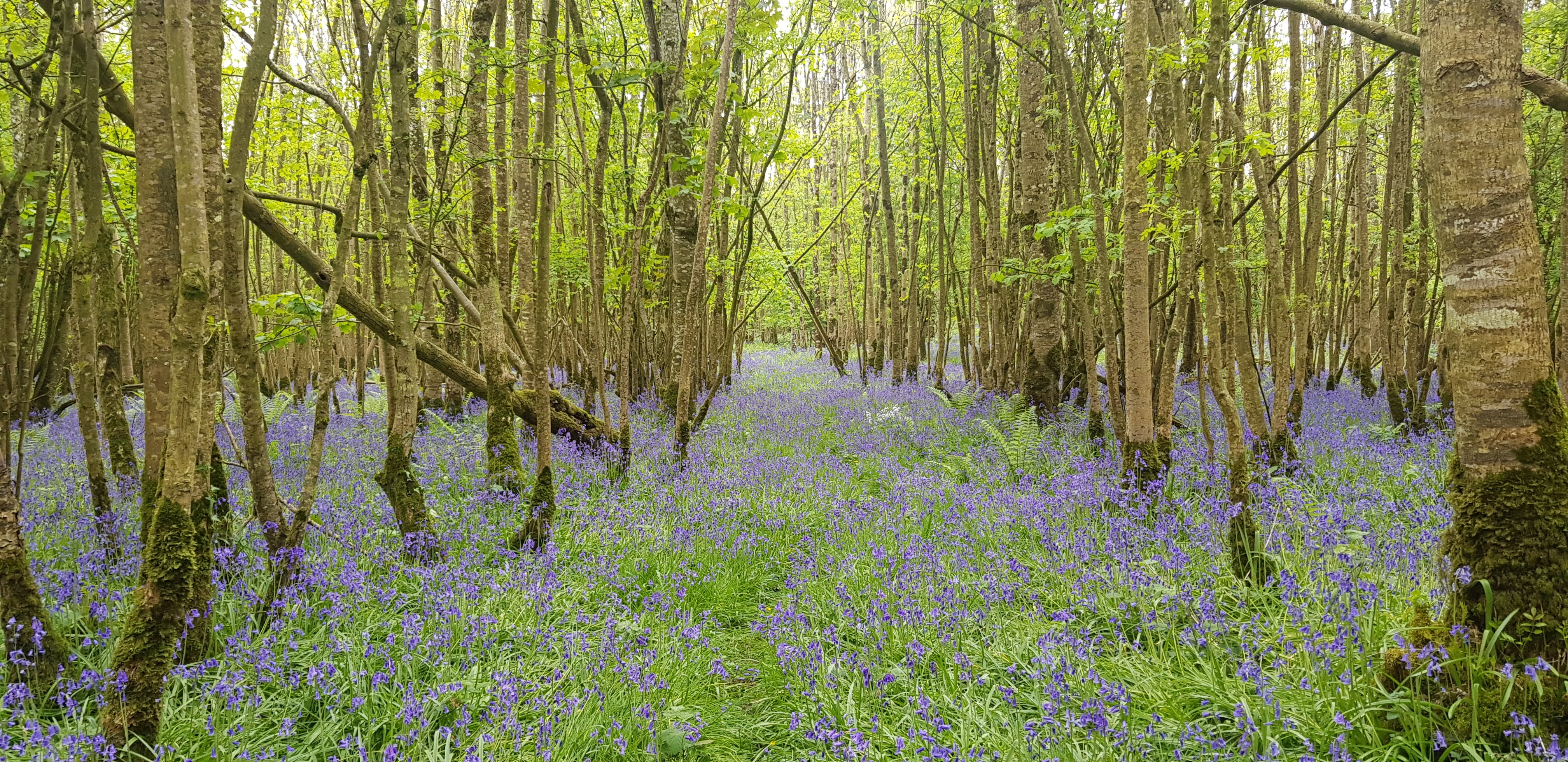|
Flannchad Ua HEolais
Flannchad Ua hEolais (fl. 1101) was a twelfth century scribe and scholar at the abbey of Durrow, County Offaly. He was likely born, and lived his childhood, at ''Conmaicne, Conmaicne Réin'', present day southern County Leitrim. Flannchad moved to County Offaly in adult life to become a ''scriba'' (scribe) at Durrow Monastery. Life Flannchad was a scholar and scribe at Durrow, County Offaly. He wrote a document on a blank verso of the Book of Durrow. The text, in Irish and Latin, describes a resolution for some unrecorded dispute, supposedly agreed during the reign of Muirchertach Ua Briain as high king of Ireland. That suggests Flannchad was active circa 1101AD. Flannchad was probably buried at Durrow monastery. A great agreement (oentu) between Comgan and Columcille. ... It was given in the time of Muiredach mac meic Cormain and Muircheartach Ua Briain king of Ireland... Flannchad Ua hEolais was the scribe. (App. XXVII) " The settlement of disputes in early medieval Europe", ... [...More Info...] [...Related Items...] OR: [Wikipedia] [Google] [Baidu] |
Muintir Eolais
The Muintir Eolais of Conmaicne Réin, were nobles of Gaelic Ireland. For seven hundred years from the 8th century, they lived and ruled an area roughly conterminous to present-day south County Leitrim. Their territory comprised the lands named and , today the baronies of Leitrim and Mohill respectively. The Mag Raghnaill, O'Mulvey, and Mac Shanley rule became increasingly fragmented throughout the 16th century. The tuath of the Muintir Eolais collapsed with Irish defeat in the Nine Years' War, and became largely forgotten with the English occupation of Ireland. Rise of Muintir Eolais (c. 900AD) The dynasty of Muintir Eolais originated with Eolais mac Biobhsach, chieftain of the Conmaicne circa 900AD. Little is known about Eolais. The word 'eolas' itself means 'knowledge' in the Irish language. After his death his followers and territory are known as the ''Muintir Eolais'' (people/descendants of Eolas). Founding families The principal Muintir Eolais families were Mac Ragh ... [...More Info...] [...Related Items...] OR: [Wikipedia] [Google] [Baidu] |
County Leitrim
County Leitrim ( ; gle, Contae Liatroma) is a county in Ireland. It is in the province of Connacht and is part of the Northern and Western Region. It is named after the village of Leitrim. Leitrim County Council is the local authority for the county, which had a population of 35,087 according to the 2022 census. The county encompasses the historic Gaelic territory of West Breffny () corresponding to the northern part of the county, and Muintir Eolais or Conmaicne Réin, corresponding to the southern part. Geography Leitrim is the 26th largest of the 32 counties by area (the 21st largest of the 26 counties of the Republic) and the smallest by population. It is the smallest of Connacht's five counties in both size and population. Leitrim is bordered by the counties of Donegal to the north, Fermanagh to the north-east, Cavan to the east, Longford to the south, Roscommon to the south-west and Sligo to the west. Fermanagh is in Northern Ireland while all the other neighbour ... [...More Info...] [...Related Items...] OR: [Wikipedia] [Google] [Baidu] |
People From County Offaly
A person ( : people) is a being that has certain capacities or attributes such as reason, morality, consciousness or self-consciousness, and being a part of a culturally established form of social relations such as kinship, ownership of property, or legal responsibility. The defining features of personhood and, consequently, what makes a person count as a person, differ widely among cultures and contexts. In addition to the question of personhood, of what makes a being count as a person to begin with, there are further questions about personal identity and self: both about what makes any particular person that particular person instead of another, and about what makes a person at one time the same person as they were or will be at another time despite any intervening changes. The plural form "people" is often used to refer to an entire nation or ethnic group (as in "a people"), and this was the original meaning of the word; it subsequently acquired its use as a plural form of ... [...More Info...] [...Related Items...] OR: [Wikipedia] [Google] [Baidu] |
People From County Leitrim
A person ( : people) is a being that has certain capacities or attributes such as reason, morality, consciousness or self-consciousness, and being a part of a culturally established form of social relations such as kinship, ownership of property, or legal responsibility. The defining features of personhood and, consequently, what makes a person count as a person, differ widely among cultures and contexts. In addition to the question of personhood, of what makes a being count as a person to begin with, there are further questions about personal identity and self: both about what makes any particular person that particular person instead of another, and about what makes a person at one time the same person as they were or will be at another time despite any intervening changes. The plural form "people" is often used to refer to an entire nation or ethnic group (as in "a people"), and this was the original meaning of the word; it subsequently acquired its use as a plural form of p ... [...More Info...] [...Related Items...] OR: [Wikipedia] [Google] [Baidu] |
12th-century Deaths
1 (one, unit, unity) is a number representing a single or the only entity. 1 is also a numerical digit and represents a single unit of counting or measurement. For example, a line segment of ''unit length'' is a line segment of length 1. In conventions of sign where zero is considered neither positive nor negative, 1 is the first and smallest positive integer. It is also sometimes considered the first of the infinite sequence of natural numbers, followed by 2, although by other definitions 1 is the second natural number, following 0. The fundamental mathematical property of 1 is to be a multiplicative identity, meaning that any number multiplied by 1 equals the same number. Most if not all properties of 1 can be deduced from this. In advanced mathematics, a multiplicative identity is often denoted 1, even if it is not a number. 1 is by convention not considered a prime number; this was not universally accepted until the mid-20th century. Additionally, 1 is th ... [...More Info...] [...Related Items...] OR: [Wikipedia] [Google] [Baidu] |
11th-century Births
The 11th century is the period from 1001 ( MI) through 1100 ( MC) in accordance with the Julian calendar, and the 1st century of the 2nd millennium. In the history of Europe, this period is considered the early part of the High Middle Ages. There was, after a brief ascendancy, a sudden decline of Byzantine power and a rise of Norman domination over much of Europe, along with the prominent role in Europe of notably influential popes. Christendom experienced a formal schism in this century which had been developing over previous centuries between the Latin West and Byzantine East, causing a split in its two largest denominations to this day: Roman Catholicism and Eastern Orthodoxy. In Song dynasty China and the classical Islamic world, this century marked the high point for both classical Chinese civilization, science and technology, and classical Islamic science, philosophy, technology and literature. Rival political factions at the Song dynasty court created strife amongst ... [...More Info...] [...Related Items...] OR: [Wikipedia] [Google] [Baidu] |
12th-century Irish People
1 (one, unit, unity) is a number representing a single or the only entity. 1 is also a numerical digit and represents a single unit of counting or measurement. For example, a line segment of ''unit length'' is a line segment of length 1. In conventions of sign where zero is considered neither positive nor negative, 1 is the first and smallest positive integer. It is also sometimes considered the first of the infinite sequence of natural numbers, followed by 2, although by other definitions 1 is the second natural number, following 0. The fundamental mathematical property of 1 is to be a multiplicative identity, meaning that any number multiplied by 1 equals the same number. Most if not all properties of 1 can be deduced from this. In advanced mathematics, a multiplicative identity is often denoted 1, even if it is not a number. 1 is by convention not considered a prime number; this was not universally accepted until the mid-20th century. Additionally, 1 is ... [...More Info...] [...Related Items...] OR: [Wikipedia] [Google] [Baidu] |
History Of County Offaly
County Offaly (; ga, Contae Uíbh Fhailí) is a county in Ireland. It is part of the Eastern and Midland Region and the province of Leinster. It is named after the ancient Kingdom of Uí Failghe. It was formerly known as King's County, in honour of Philip II of Spain. Offaly County Council is the local authority for the county. The county population was 82,668 at the 2022 census. Central Statistics Office figures Geography and political subdivisions Offaly is the 18th largest of Ireland's 32 counties by area and the 24th largest in terms of population. It is the fifth largest of Leinster's 12 counties by size and the 10th largest by population.Physical geography [...More Info...] [...Related Items...] OR: [Wikipedia] [Google] [Baidu] |
History Of County Leitrim
County Leitrim ( ; gle, Contae Liatroma) is a county in Ireland. It is in the province of Connacht and is part of the Northern and Western Region. It is named after the village of Leitrim. Leitrim County Council is the local authority for the county, which had a population of 35,087 according to the 2022 census. The county encompasses the historic Gaelic territory of West Breffny () corresponding to the northern part of the county, and Muintir Eolais or Conmaicne Réin, corresponding to the southern part. Geography Leitrim is the 26th largest of the 32 counties by area (the 21st largest of the 26 counties of the Republic) and the smallest by population. It is the smallest of Connacht's five counties in both size and population. Leitrim is bordered by the counties of Donegal to the north, Fermanagh to the north-east, Cavan to the east, Longford to the south, Roscommon to the south-west and Sligo to the west. Fermanagh is in Northern Ireland while all the other neighb ... [...More Info...] [...Related Items...] OR: [Wikipedia] [Google] [Baidu] |
Clonmacnoise
Clonmacnoise ( Irish: ''Cluain Mhic Nóis'') is a ruined monastery situated in County Offaly in Ireland on the River Shannon south of Athlone, founded in 544 by Saint Ciarán, a young man from Rathcroghan, County Roscommon. Until the 9th century it had close associations with the kings of Connacht. Saint Ciarán founded the monastery in the ancient territory of Uí Maine at a point where the major east–west land route ( Slighe Mhor) meets the River Shannon after crossing the bogs of Central Ireland known as the Esker Riada. The strategic location of the monastery helped it become a major center of religion, learning, craftsmanship and trade by the 9th century;Moss (2014), p. 126 and together with Clonard it was one of the most famous places in Ireland, visited by scholars from all over Europe. From the ninth until the eleventh century it was allied with the kings of Meath. Many of the high kings of Tara ( ''ardrí'') and of Connacht were buried here. Clonmacnoise was la ... [...More Info...] [...Related Items...] OR: [Wikipedia] [Google] [Baidu] |
County Offaly
County Offaly (; ga, Contae Uíbh Fhailí) is a Counties of Ireland, county in Republic of Ireland, Ireland. It is part of the Eastern and Midland Region and the Provinces of Ireland, province of Leinster. It is named after the Ancient Ireland, ancient Kingdom of Uí Failghe. It was formerly known as King's County, in honour of Philip II of Spain. Offaly County Council is the Local government in the Republic of Ireland, local authority for the county. The county population was 82,668 at the 2022 census. Central Statistics Office figures Geography and political subdivisions Offaly is the 18th largest of Ireland's 32 counties by area and the 24th largest in terms of population. It is the fifth largest of Leinster's 12 counties by size and the 10th largest ...[...More Info...] [...Related Items...] OR: [Wikipedia] [Google] [Baidu] |
Muirchertach Ua Briain
Muircheartach Ua Briain (old spelling: Muirchertach Ua Briain) (also known as Murtaugh O'Brien) (c. 1050 – c. 10 March 1119), son of Toirdelbach Ua Briain and great-grandson of Brian Boru, was King of Munster and later self-declared High King of Ireland. Background and early career Muirchertach Ua Briain was a son of Toirdelbach Ua Briain, the previous Dalcassian King of Munster and de facto High King of Ireland. As a descendant of Brian Boru, he was part of the powerful O'Brien dynasty who ruled Ireland at the time. His mother was Derbforgaill, daughter of Tadhg Mac Giolla Pádraig of Osraige, who also bore Muirchertach's brother Tadhg.Carrigan; ''History and Antiquities of the Diocese of Ossory'', vol. 1, pg 51. His early life is largely unknown. The Annals of Tigernach give his birth date as in the year 1050. Afterwards, he is not mentioned in any of the annals of Ireland until the year 1075 when he was defeated by the Kingdom of Airgíalla in battle near modern A ... [...More Info...] [...Related Items...] OR: [Wikipedia] [Google] [Baidu] |


_1938.jpg)



